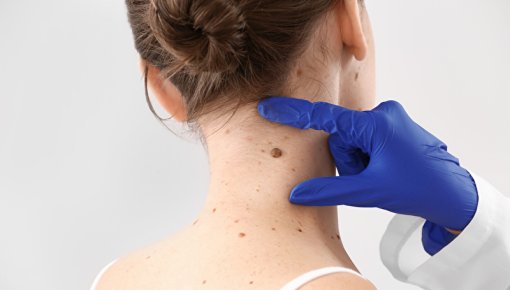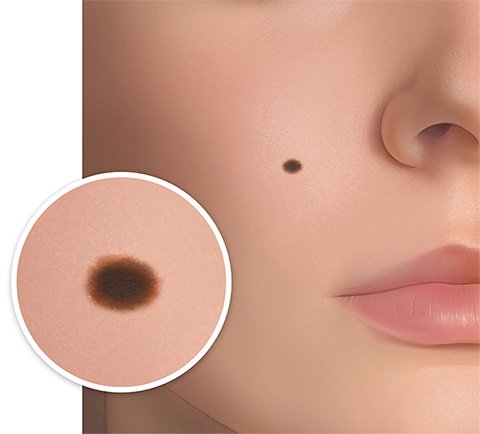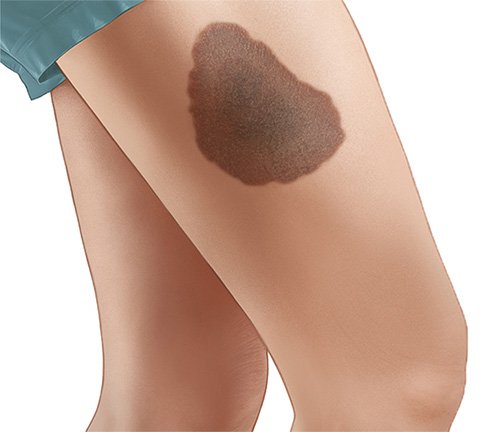What do moles, birthmarks and other nevi look like?

Moles and other nevi are typically just a few millimeters in size, oval or round in shape, and darker than the surrounding skin. But some are much bigger and have a different color or shape – such as reddish port-wine stains or slate gray nevi on the lower back.
Many people have spots or areas of skin that are darker than the rest of their skin. Commonly known as moles, birthmarks or beauty spots, most of these are considered to be a nevus (plural: nevi) from a medical point of view.















